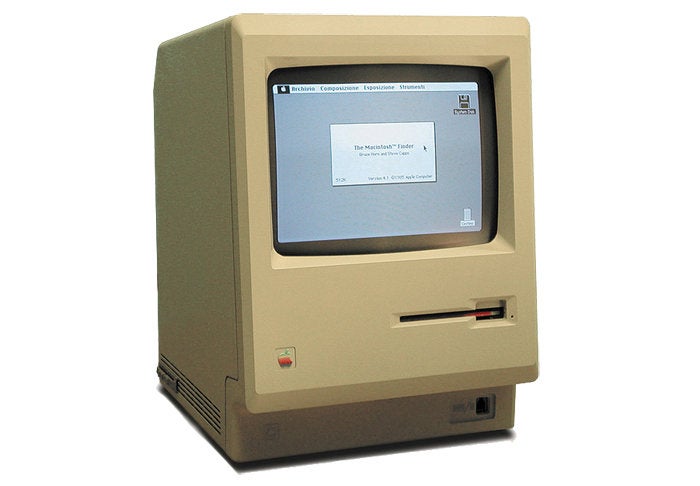By Jonny Evans, Computerworld |
Appleholic, (noun), æp·əl-hɑl·ɪk: An imaginative person who thinks about what Apple is doing, why and where it is going. Delivering popular Apple-related news, advice and entertainment since 1999.
Apple, Zebra, Android? It really doesn’t matter how you choose to equip your front-line teams, if you’ve failed to spend time figuring out what problems your technology investment solves for them.
A hypothetical scenario: A large manufacturing company decides to equip 60 section managers with ruggedized tablets to gather data at work. The company took advice and introduced a device management system to enable IT to remotely handle and secure those systems. Senior managers spoke with the hardware supplier and chose an off-the-shelf interface they felt answered most of the company’s needs. They then mandated that the employees begin using the new systems.
What do you think happened next?
As staff worked with the new tools in a prelude to switching over, they discovered that some elements of the interface were clunky or irrelevant. Some really important functions sat buried within menus (or apps) that had no other useful function.
Not only this, but some key tasks weren’t yet supported by the software, which meant workers individually had to find workarounds, few of which were compatible. When the systems went live, the company then discovered that some facilities suffered from significant network access problems; key information wasn’t updated, which meant workers still had to check with each other for insight using older processes.
The result?
The employees ceased making proper use of the tech, resorting to legacy processes without telling senior management, creating an instant data vulnerability, and undermining the company’s capacity to exploit all its data for new efficiency gains.
Management wondered why their data-driven insights they hoped for seemed unrealistic, and why productivity fell.
This is a notional example, of course. But it exposes some of the challenges facing companies attempting to unleash digital efficiency with tech when they approach the task with a hierarchical mind-set.
Digital transformation — whatever it is, because it’s a catch-all phrase for a zillion different usage cases — is nothing if you don’t put humans at the center of the change. You can throw all the technology in the world at your business, but if you don’t spend time figuring out what problems you want to solve, the investment will probably fail.
In this case, senior management’s biggest failure was that it spoke to the tech supplier before speaking with the target customer in the project. That customer wasn’t, as senior management thought, the senior management – it was the 60 section chiefs who were expected to use these devices.
Decision-makers chose an off-the-shelf solution before they talked to workers. As a result, they mandated solutions that didn’t meet the needs of the humans in the chain. Not only that, but the choices over-complicated existing processes by getting in the way of existing tasks.
In short: All that tech intelligence failed to work in partnership.
Elon Musk famously said in 2018: “Yes, excessive automation at Tesla was a mistake. To be precise, my mistake. Humans are underrated.”
Or, as Apple’s Steve Jobs once said: “Apple should be the kind of place where anybody can walk in and share ideas with the CEO.”
In other words, your front-line workers should be heard, not merely seen. This is precisely the challenge faced by so many companies racing to digitize their existing business processes, which is ironic since the consumerization of IT should already have taught them that the greatest benefits will always come from solutions that put humans first.
Apple knows this, of course — its famed Human Interface Guidelines are in part what drove its success in consumer markets. Those same guidelines are also why an increasing number of enterprise customers today are choosing Apple equipment, for precisely the same reasons — ease of use, familiarity, and a good user experience.
User experience is, of course, part of the challenge that failed the transition at the fantasy company. This fantasy deployment completely failed to consider the employee experience — and that’s the kiss of death for any company attempting to put new systems and processes in place.
For best results, not only should the tech you use at work be just as good as what you use at home, but it should be custom purposed for the tasks you’re attempting to do. You shouldn’t need to navigate friction to get things done — the tech you use should enable you to get more done faster, not get in the way of doing what you already do.
I’ve lost track of the number of times people have told me this when discussing their approach to a successful tech transition within their company, or on behalf of clients. Yet, when so many enterprises haven’t yet fully embraced how mobile technologies can help their business, it’s something that must forever be repeated.
A recently reported Volvo deployment is a great illustration of a more successful deployment strategy. Vehicle engineers were issued a wearable device to help boost customer relationships. During UI development, the car company’s digital experience teams worked closely with the people who mattered most — the engineers who would use the solution. They then developed a system custom-made for them. This included abandoning features the developers had originally assumed the engineers would need and including features they didn’t expect to need.
The result? Happy engineers, and improved customer contact.
When you want to make major organizational change, it makes sense to speak first to the people whose work keeps your enterprise going.
Transformation must begin at the heart of the company and ripple outwards, not at the top of the company and trickle down. We already know trickle down anything is rarely well distributed.
Why would it be any different in your business?
For best results, tech investments should solve problems your employees have. When they do, everything else should follow.
Please follow me on Twitter, or join me in the AppleHolic’s bar & grill and Apple Discussions groups on MeWe.
Jonny is a freelance writer who has been writing (mainly about Apple and technology) since 1999.
Copyright © 2022 IDG Communications, Inc.
Copyright © 2022 IDG Communications, Inc.
Author Profile
Latest entries
 राशीफल2024.04.25Aaj Ka Rashifal: कर्क और कन्या राशि वालों को कार्यक्षेत्र में मिल सकती है तरक्की, पढ़ें दैनिक राशिफल – अमर उजाला
राशीफल2024.04.25Aaj Ka Rashifal: कर्क और कन्या राशि वालों को कार्यक्षेत्र में मिल सकती है तरक्की, पढ़ें दैनिक राशिफल – अमर उजाला लाइफस्टाइल2024.04.25Winter & Migraine: इस मौसम में ट्रिगर हो सकती है माइग्रेन की समस्या, जानिए इसके कारण और बचाव के उपाय – अमर उजाला
लाइफस्टाइल2024.04.25Winter & Migraine: इस मौसम में ट्रिगर हो सकती है माइग्रेन की समस्या, जानिए इसके कारण और बचाव के उपाय – अमर उजाला धर्म2024.04.25'राजनीति का धर्म ' या 'धर्म की राजनीति' | Relation Between Politics and Religion – Hindi Oneindia – Oneindia Hindi
धर्म2024.04.25'राजनीति का धर्म ' या 'धर्म की राजनीति' | Relation Between Politics and Religion – Hindi Oneindia – Oneindia Hindi टेक2024.04.2522 New Technology Trends for 2024: New Tech Horizons – Simplilearn
टेक2024.04.2522 New Technology Trends for 2024: New Tech Horizons – Simplilearn











